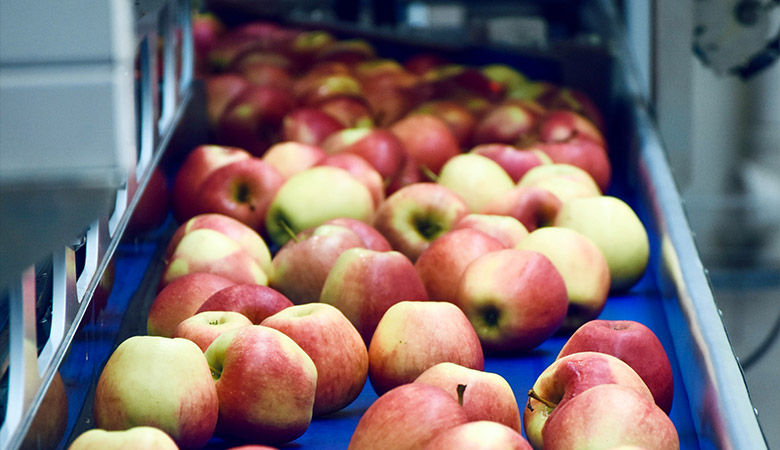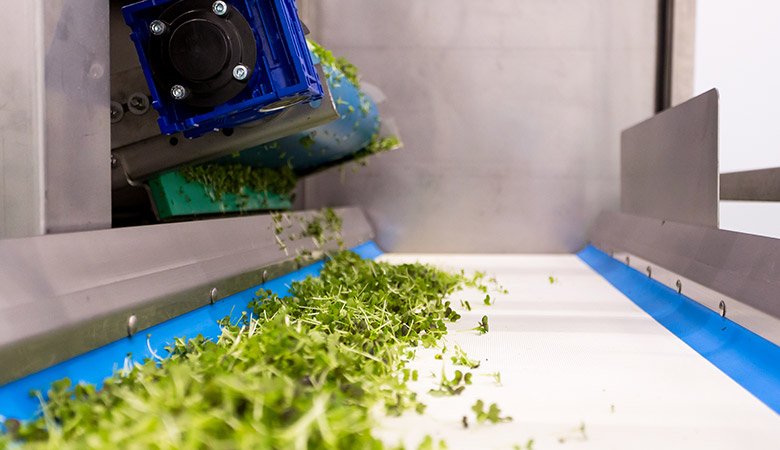Gestion / Articles
6 indicateurs de productivité à surveiller au quotidien
Les indicateurs de productivité sont les signes vitaux de santé des entreprises. Voici les 6 à surveiller.

 9 minutes de lecture
9 minutes de lecture
2023-03-16 19:05:36
Big Data, Intelligence artificielle, Industrie 4.0, 5G – le nombre de sources de données relatives à la productivité n’a jamais été aussi élevé. Néanmoins, lorsque les processus sont nombreux et complexes, définir la priorité des ICP, comment les évaluer et comment transformer cette information en actions d’amélioration concrètes peut constituer un défi. Nous vous aidons aujourd’hui en vous proposant ces 6 indicateurs de productivité à surveiller au quotidien.
1. Taux de rendement global (OEE)
Cet indicateur de productivité, connu sous le sigle OEE (de l’anglais, Overall Equipement Effectiveness) est l’un des plus utilisés pour évaluer l’efficacité des machines. Pour faire simple, il comptabilise le pourcentage de temps de fabrication réellement productif. Pour effectuer le calcul de l’OEE, 3 facteurs sont pris en compte : Disponibilité, Rendement et Qualité.
La Disponibilité concerne le nombre d’arrêts planifiés et non planifiés. Un taux de disponibilité de 100% signifie que le processus est sans cesse en exécution pendant la durée de production planifiée – après déduction des pauses, installations et maintenances programmées.
Le Rendement, quant à lui, est calculé sur la base des cycles lents et des arrêts brefs. Un taux de 100 % signifie que le processus, lorsqu’il est actif, est exécuté conformément au rythme standard.
Enfin, le facteur Qualité tient compte des produits défectueux, y compris ceux devant être fabriqués à nouveau. Un taux de 100 % pour ce sous-indicateur signifie que seuls sont fabriqués des produits de qualité, n’ayant pas besoin d’être retravaillés. Si l’on additionne tous les composants de l’équation, un taux de 100 % pour cet ICP impliquerait que la machine est toujours disponible et fabrique sans défauts une quantité maximale de produits sur une période déterminée.
Afin d’améliorer cet ICP, il est primordial de disposer d’appareils efficaces et de réaliser la maintenance prévue par le fabricant. Dans le cas du lavage industriel, la MultiWasher est une référence, dont les diverses fonctionnalités permettent d’augmenter l’OEE. Par exemple, la capacité d’enregistrer plusieurs programmes préalablement optimisés permet de gagner du temps au moment de l’installation. Le tableau de bord intuitif permet d’ajuster rapidement les configurations et les paramètres de production sont automatiquement adaptés, afin de garantir qualité et rendement.
2. Quantité produite par heure/collaborateur
Il s’agit de l’un des indicateurs de productivité les plus utilisés pour évaluer la capacité de production, principalement au sein des entreprises dépendant d’une main d’œuvre intensive. Pour faire ce calcul, il suffit de diviser le total des biens produits par le total des heures travaillées et des personnes impliquées. Dans les activités logistiques, par exemple, cet ICP peut être utilisé pour évaluer la productivité des activités de picking, l’un des processus nécessitant le plus de ressources humaines. Le secteur du lavage est également concerné, le rôle joué par cet indicateur de productivité étant essentiel.
Connaître le nombre d’ustensiles lavables par heure et par ouvrier est l’un des ICP les plus importants dans ce domaine. Des machines telles que la MultiWasher ont été spécialement développées dans le but d’améliorer cet indicateur, en réduisant les temps de cycle de lavage et en évitant de relaver. La machine a donc été conçue selon un design ergonomique qui facilite le remplissage et le vidage et augmente la capacité de lavage d’une large variété de produits sans avoir à régler les paramètres.
3. Temps Moyen de Réparation (MTTR)
Cet indicateur de productivité est particulièrement important pour les équipes de maintenance. Connu sous le sigle MTTR (de l’anglais, Mean Time to Repair), il représente le temps moyen nécessaire pour réparer une panne et remettre l’équipement en fonctionnement à une vitesse standard. Cet ICP peut être calculé en divisant le temps total passé à réparer les pannes par le total des pannes corrigées. Le résultat est, normalement, affiché en heures.
Un MTTR élevé (ou à tendance à la hausse) peut indiquer que le remplacement d’un équipement est préférable à sa réparation. Gérer cet indicateur de productivité est primordial pour éviter ou minimiser les préjudices dérivés de l’inactivité.
4. Utilisation de la capacité installée
L’utilisation de la capacité installée lie le niveau de l’activité productive actuelle de l’entreprise à son potentiel maximal de production. En d’autres termes, cela désigne le lien entre ce que l’entreprise produit et le maximum qu’elle peut produire.
En théorie, les chiffres sont affichés en considérant une production ininterrompue de 24 heures. Le calcul peut s’effectuer au travers de la relation entre la quantité totale de produits fabriqués et le potentiel de sortie de la production. Par exemple, si la capacité installée révèle que l’entreprise ne produit que 50 % de son potentiel maximal, cela signifie qu’elle possède une capacité installée pour produire le double.
5. Livraisons à temps
Connu sous le sigle OTD (en anglais, On-Time Delivery), cet ICP calcule le nombre de livraisons effectuées aux clients dans les délais impartis. Une manière de calculer cet ICP consiste à diviser le nombre de livraisons en retard par le nombre total de livraisons. Par exemple, si on compte 5 livraisons en retard sur une semaine et 100 livraisons au total, l’OTD sera de 95 %.
Un faible OTD peut être indicateur de plusieurs problèmes en amont, autant en termes de planification et de production que de stockage ou de livraisons. Il s’agit donc d’un ICP global de productivité important à suivre et qui résume l’état de l’entreprise. Certaines entreprises leaders mesurent cet indicateur à l’aide d’un twist – le dénommé OTD in full, qui évalue non seulement le respect des délais mais également les quantités prévues. Ainsi, en cas d’écart d’une seule unité au niveau de la quantité prévue dans la commande, la livraison est immédiatement considérée comme défaillante.
6. Turnover
Il s’agit de l’un des indicateurs de productivité les plus importants pour toute entreprise. Le turnover représente la rotation de l’effectif d’une entreprise, soit le nombre de départs et d’arrivées sur une période donnée. Pour calculer cet ICP, il suffit de prendre en compte la durée moyenne de permanence de chaque salarié au sein de l’entreprise. Il peut également être calculé en additionnant le nombre de démissions et le nombre de nouvelles embauches et, ensuite, en le divisant par l’effectif total.
Si l’indice de turnover est élevé, il y aura d’importantes baisses de productivité, au vu de la période d’adaptation aux normes de travail nécessaire aux nouveaux salariés. Cela peut également être le signe de problèmes de gestion ou d’un manque de valorisation des professionnels, ce qui aura des conséquences sur tous les autres indicateurs de productivité.
Comment Somengil aide les entreprises à améliorer leurs résultats
La MultiWasher est une machine à laver de dernière génération, conçue pour hygiéniser tout type d’ustensile. Dans les domaines notamment où l’hygiénisation est un facteur clé de succès, elle permet d’améliorer la productivité et les résultats et de renforcer les processus de sécurité alimentaire. Contactez nos consultants et constatez par vous-même l’impact que pourra avoir la MultiWasher sur la productivité de votre entreprise.
Tu pourrais aimer

Gestion / Articles
Qu’est-ce que le cycle PDCA ?
Le cycle PDCA a déjà près de 70 ans mais c’est encore un outil de gestion incontournable. Découvrez pourquoi il est toujours aussi important.
Publié dans 2023-03-23

Gestion / Articles
6 indicateurs de qualité essentiels (et comment les améliorer)
Découvrez 6 indicateurs de qualité essentiels, comment les évaluer et comment les améliorer dans la pratique.
Publié dans 2023-03-09























 Portugal
Portugal United Kingdom
United Kingdom United States
United States France
France Spain
Spain Germany
Germany Romania
Romania Italy
Italy Czech Republic
Czech Republic Finland
Finland Hungary
Hungary Slovakia
Slovakia Greece
Greece Lithuania
Lithuania South Korea
South Korea Russia
Russia Saudi Arabia
Saudi Arabia Poland
Poland Brasil
Brasil Hebrew
Hebrew